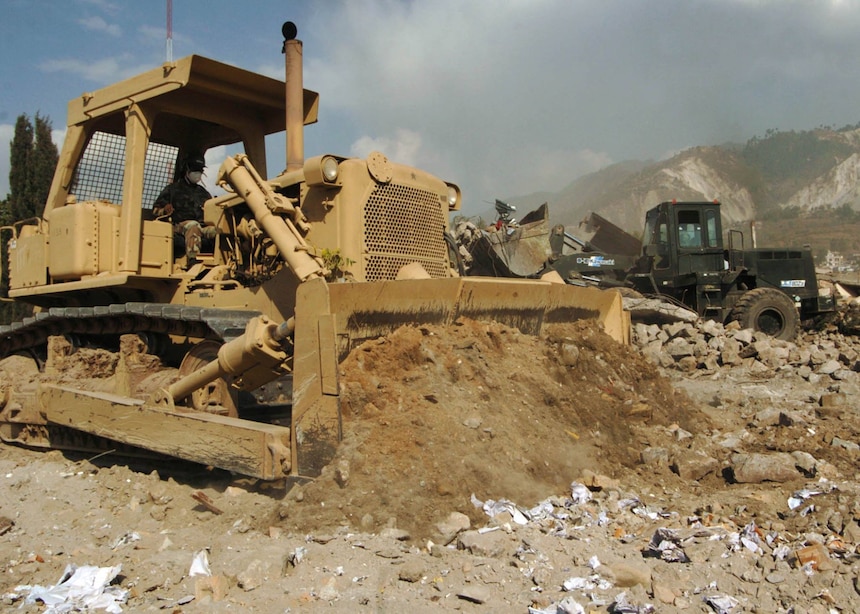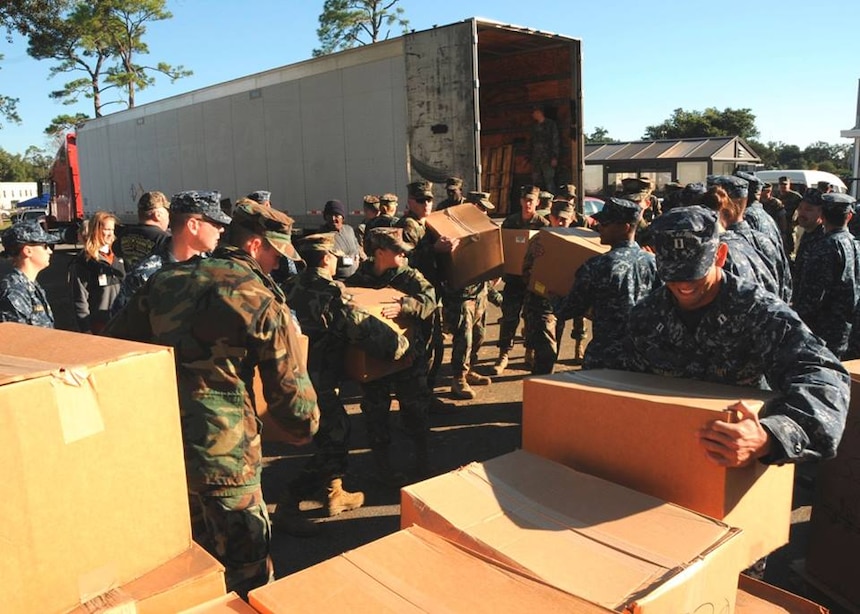Consolidated By U.S. Navy Seabee Museum, Naval History and Heritage Command
October 30
1945: 7th Naval Construction Battalion (NCB) inactivated at Okinawa.
1964: Naval Mobile Construction Battalion (NMCB) 3 main body aboard USNS Patrick arrived at Guam.
1966: In a ceremony at the Sands Point Naval Air Station (NAS), Seattle, Washington, Rear Adm Lewis C. Coxe, commander of the Southwest Division of Naval Facilities Engineering Command (NAVFAC), presented the Perry Award to the commanding officer of Reserve Mobile Construction Battalion (MCB) 18. This was the first year the Perry Trophy was awarded. The Perry Trophy competition provides a yardstick for measuring the mobilization capability of each Reserve MCB. Military and operational readiness, manning level, overall proficiency, leadership and morale are considered in the selection process.
1966: Personnel of NMCB 7 assembled to pay tribute to one of their own. In a brief ceremony, the battalion camp at Phu Bai, Republic of Vietnam (RVN), was dedicated in memory of a lost shipmate, Steelworker (Erector) 3rd Class Stanley Claus Campbell. On August 25, 1966, Campbell gave his life on the defensive perimeter of the camp which now bore his name.

October 31
1941: The Chief of the Bureau of Navigation, Rear Adm Chester W. Nimitz, authorized the Bureau of Yards and Docks to establish a Headquarters Construction Company of 99 men. Resident Officers in Charge of Construction (ROICC) were to utilize the men as engineering aids and administrators, and as inspectors and supervisors to oversee the work of civilian construction contractors at overseas bases. It was not contemplated that the company would do any actual construction work.
1945: 4th NCB inactivated. 50th NCB inactivated on Tinian. 74th NCB inactivated on Okinawa. 41st Special NCB inactivated at Hollandia.
1950: 104th and 105th NCB s re-designated as Amphibious Construction Battalions (ACB) 1 and 2, respectively.

1966: NMCB 8 advance party arrived at Chu Lai, RVN.

November 1
1943: Aviation, Construction, Ordnance, Repair, Navy (ACORN) 15 arrived at Noumea, New Caledonia. ACORNs were advanced base units consisting of combat aircraft service personnel and a Seabee detachment. Their responsibility was the construction, administration, operation, and maintenance of new or existing airfields during World War II.
1945: After World War II, several naval activities were transferred to or established at Port Hueneme, California. The Advance Base Proving Grounds at Davisville, Rhode Island was disestablished and the operations, men, and equipment were transferred to Port Hueneme, later known as the Naval Civil Engineering Laboratory.
1945: 76th NCB inactivated on Guam.
1960: NMCB 8 reactivated.
1965: The first units of 300 Seabee-built homes at the U.S. Naval Station Rota, Spain opened to occupancy through a joint effort of NMCBs 4, 7 and 8. Construction commenced on the housing project in July 1964.
1966: Seabee Team 0909 completed training at the 31st NCR and deployed to Thailand via C-130 aircraft. NMCB 3 advance party departed for the continental United States (CONUS).
1967: Ghost Battalion disestablished in the RVN. Cmdr. Foley returned and resumed command of NMCB 3.
1967: Seabee Team 0911 completed training at the 31st Naval Construction Regiment (NCR) and deployed to Thailand via C-118 aircraft.
1967: Seabee Team 5801 graduated from Seabee Team training, and was assigned to Officer in Charge (OIC), Construction Battalions, Pacific Detachment (CBPAC), RVN, deploying to Chau Doc.
1967: NMCB 40 relieved NMCB 71 at Chu Lai, RVN.
1969: Seabee Team 5301 arrived at Davisville, Rhode Island from Vietnam for reassignment to NMCB 53.
1973: CNO declares UCT 1 and UCT 2 independent, under the 21st and 31st NCRs.
2014: NMCB 25 officially concluded battalion operations in Afghanistan with the casing of its colors in a ceremony at New Kabul Compound, Afghanistan. This ended 13 years of Naval Construction Force operations in Afghanistan in support of Operation Enduring Freedom.
November 2
1942: The offices of Director, Atlantic Division and Director, Pacific Division, Bureau of Yards and Docks were established with the Director given authority to act for the Chief of the Bureau.

November 3
1942: 36th NCB arrives at Camp Peary, Magruder, Virginia, the first Seabee unit to train at the camp.
1945: 117th NCB inactivated at Saipan.
1968: Seabee Team 0310 moved from Long Xuyen to Bac Lieu, RVN via convoy.
1969: NMCB 1 deployed from Camp Campbell, Phu Bai, RVN to Camp Haskins North, Da Nang, RVN. NMCB 1 relieved of command of Camp Campbell by Headquarters Company, 101st Airborne Division. NMCB 1 assumed command of Camp Haskins North from NMCB 53.
November 4
1942: Camp Peary established in Williamsburg, Virginia, named in honor of Rear Admiral Robert E. Peary, Civil Engineer Corps (CEC), U.S. Navy.
1944: 6th NCR inactivated.
November 5
1945: 9th Naval Construction Brigade inactivated.
1971: Seabee Teams 1019 and 1020 were disestablished. Seabee Teams 1021 and 1022 were established and organized with the 31st NCR Port Hueneme, California.
2004: Rear Adm. Robert L. Phillips, CEC, USN, relieved Rear Adm. Charles R. Kubic, CEC, USN, as Commander, First Naval Construction Division at Naval Amphibious Base Little Creek, Norfolk, Virginia.
